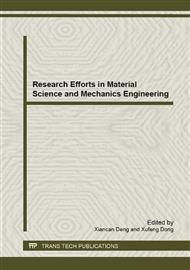p.293
p.298
p.304
p.309
p.314
p.319
p.324
p.329
p.333
Optimized Design for Multi-Layer Absorbing Materials Based on Genetic Algorithm
Abstract:
In order to synthesize the multi-layer radar absorbing materials (RAM) with a thin thickness and wide bandwidth, accelerating genetic algorithm (GA) with constraints and elitist strategy is employed to design the multi-layer RAM satisfied by a special value of reflection loss to electromagnetic wave. Given predefined available materials with frequency-dependent permittivity and permeability, the GA technique determines the optimal material choice for each layer and its thickness. The algorithm was successfully applied to the synthesis of double-layer to four-layers RAM coatings in the frequency range of 2-18GHz,and the optimization results was evaluated.
Info:
Periodical:
Pages:
324-328
Citation:
Online since:
April 2013
Authors:
Price:
Сopyright:
© 2013 Trans Tech Publications Ltd. All Rights Reserved
Share:
Citation:


